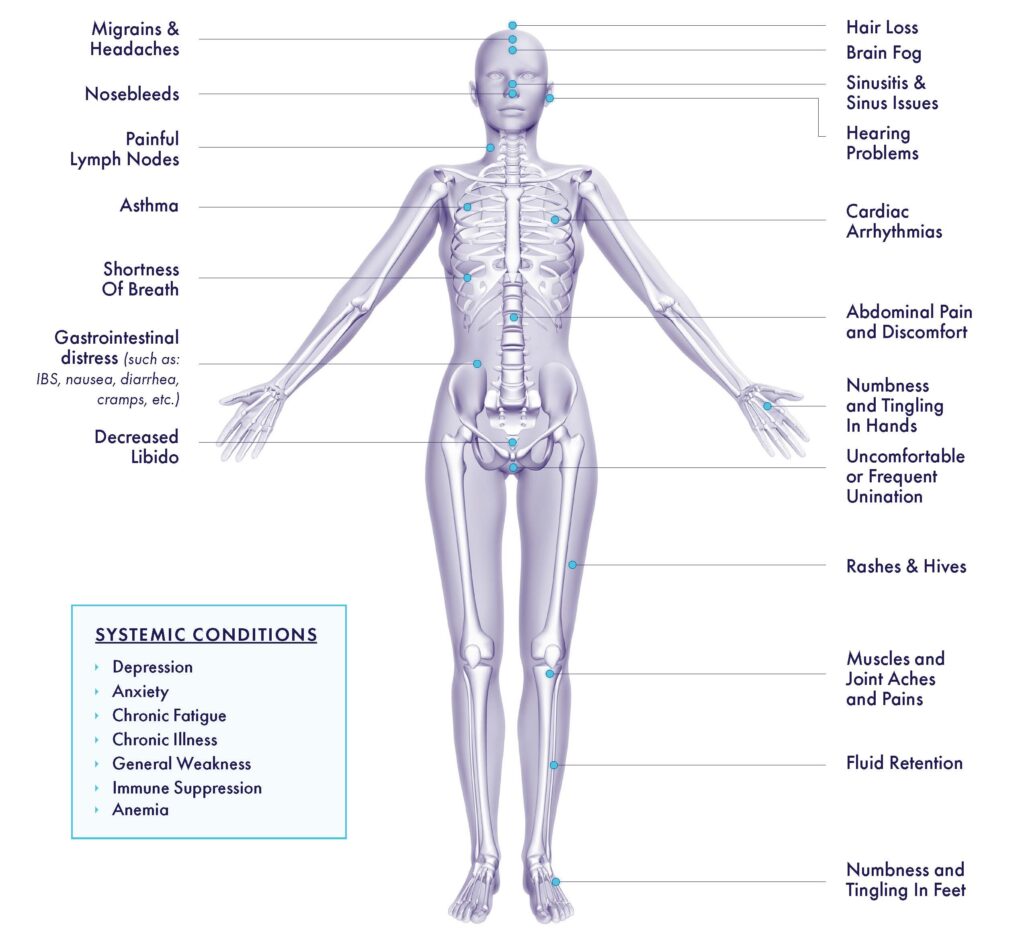Are there dangerous mycotoxins in your food or coffee?

Hearing that your morning cup of coffee or the food that you eat may contain toxins of any kind is sure to sound scary. While your coffee and food might contain mycotoxins, a single cup of contaminated coffee is usually not something to panic about. After all, it’s impossible to completely avoid toxin exposure altogether, but it is something to keep an eye on.
It is true that coffee has a high risk of containing mycotoxins, with studies showing low levels of mycotoxins present in most coffees. However, the levels of those mycotoxins alone are not likely to cause health issues, when combined with additional sources of exposure it can become problematic. Many foods have a high risk of mycotoxin contamination, especially grains, dried fruits, cheeses, meat and dairy from grain-fed animals, nuts, and wine and beer. In combination with other sources of mycotoxin exposure, consumption of these foods can add to your body’s total toxic burden and contribute to mycotoxin toxicity.
How Mycotoxins Affect the Body

Think of your body’s ability to process mycotoxins as a bucket with a spigot at the bottom, the bucket is your body’s toxic burden and the spigot is its ability to detoxify. Think of each source of mycotoxin exposure as a drop of water in the bucket: 3 cups of contaminated coffee equals 3 drops in the bucket, a charcuterie board adds 5 drops, and moldy home adds 3 cups of water, with each exposure slowly “filling” the bucket. The more sources of mycotoxins you’re exposed to, the faster the water fills the bucket.
Meanwhile, the spigot at the bottom of your bucket attempts to drain out (detoxify) the harmful mycotoxins you have been exposed to. Your genetic makeup, your body’s ability to detoxify, and your overall health all affect just how “open” this spigot is. If the spigot is barely open at all, it may take the bucket a long time to empty all the water, leading to it eventually overflowing. If the incoming “flow” of mycotoxins is just too much for your body’s “spigot” to process, you may experience “overflow”, or mycotoxin toxicity.
While the levels of mold and mycotoxins in your food and coffee may be relatively low, adding another source of mold into your life, especially if your body struggles to process mycotoxins to begin with, can lead to health issues. These include mold illness symptoms like coughing, rash, fatigue, brain fog, and immune deficiency. The symptoms of mycotoxin toxicity can vary and are often similar to other disorders, which can commonly lead to misdiagnosis.
If you have tested high for mycotoxins (which can be tested for with a simple at-home urine test), looking at your coffee and food consumption is one step to take to help reduce your overall mold exposure while your body is detoxing.
Reducing Your Mold Exposure
If you want to reduce your mycotoxin exposure with regards to coffee, there are a few ways to do so. Of course, reducing your overall consumption of coffee is one good first step, but for many of us the day just isn’t right without coffee at the start of it. Organic coffees roasted in small batches tend to have fewer mycotoxins. The more processed your coffee is, the higher the risk of mycotoxins, with the worst offender being instant coffee. Studies have also shown that coffee beans grown at higher altitudes contain fewer mycotoxins.
Buying whole bean coffee and grinding it yourself at home, and only grinding as much as you need to use that day, is another way to avoid mycotoxins, as grinding coffee increases the surface area exposed to air. This both increases the risk of mold development and can make your coffee taste less fresh. Make sure you’re properly storing your coffee in a cool, dry place, ideally in an airtight container, to prevent mold growth as well.
Be sure you clean your coffeemaker and grinder regularly as well, and empty wet grounds out of your filter as soon as you’re done brewing your coffee. Wet grounds are, of course, a fertile breeding ground for mold spores.
If you’re concerned about mycotoxin exposure through your food, avoid exposing yourself to the highest-risk foods:
- Grains
- Meat and dairy from grain-fed animals
- Dried fruit
- Cheese
- Cured Meat
- Wine and beer
Sometimes low- and no-mycotoxin versions of these foods can be found, and studies have shown that grains fermented with probiotic bacteria (such as flours exposed to sourdough yeast, not to be confused with beer) can reduce the amount of mycotoxins found in the grains. Be sure to properly store all foodstuffs and promptly discard any foods that are old or appear to be moldy.
One of the greatest contributors to mycotoxin exposure is environmental mold and mycotoxin exposure. If you are concerned about your mycotoxin levels, it’s a good idea to have your home and/or workplace tested for molds and mycotoxins. A simple swab test can easily be administered even by a layperson to determine if there are molds in the environment.
Sources
Casas-Junco, P. P., Ragazzo-Sánchez, J. A., Ascencio-Valle, F. J., & Calderón-Santoyo, M. (2017). Determination of potentially mycotoxigenic fungi in coffee (Coffea arabica L.) from Nayarit. Food science and biotechnology, 27(3), 891–898. https://doi.org/10.1007/s10068-017-0288-7
Hassan YI, Zhou T, Bullerman LB. Sourdough lactic acid bacteria as antifungal and mycotoxin-controlling agents. Food Science and Technology International. 2016;22(1):79-90. https://doi.org/10.1177/1082013214565722
Lu, L., Tibpromma, S., Karunarathna, S. C., Jayawardena, R. S., Lumyong, S., Xu, J., & Hyde, K. D. (2022). Comprehensive Review of Fungi on Coffee. Pathogens (Basel, Switzerland), 11(4), 411. https://doi.org/10.3390/pathogens11040411
Thielecke, F., & Nugent, A. P. (2018). Contaminants in Grain-A Major Risk for Whole Grain Safety?. Nutrients, 10(9), 1213. https://doi.org/10.3390/nu10091213
